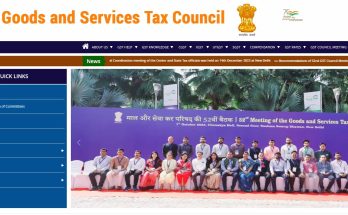Hey there! If you’ve been thinking about buying a new laptop in India, you might be wondering about the taxes you’ll have to pay. One important tax to know about is the Goods and Services Tax, or GST for short.
GST is a tax that applies to most goods and services sold in India, including laptops. It was introduced by the Indian government in July 2017 to simplify the country’s complex tax system.
Before GST, there were many different taxes like VAT, excise duty, and service tax. It was confusing!
With GST, all those taxes were replaced by just one tax. The goal was to make life easier for businesses and consumers. But it’s still important to understand how GST works, especially when making a big purchase like a laptop.
What is GST on Laptops?

In this article, we’ll dive into everything you need to know about GST on laptops in India. We’ll look at what the tax rate is, how it compares to the old system and some other important details. By the end, you’ll be a GST expert! Let’s get started.
What Was The Tax On Laptops In The Pre-GST Era?
Before we talk about GST, let’s take a quick trip back in time to see how laptops were taxed in the old days. Back before July 2017, the main tax on laptops was called Value Added Tax, or VAT for short.
VAT was different in each state of India. In most places, it was around 14-15% of the laptop’s price. So if you bought a laptop for Rs. 50,000, you’d pay an extra Rs. 7,000-7,500 in VAT. Ouch!
But wait, there’s more! In addition to VAT, there was also something called excise duty. This was a tax that manufacturers had to pay when making laptops and other electronics. It was usually around 12.5%.
So between VAT and excise duty, the total tax on laptops was often more than 25%! That’s a big chunk of change.
The old system had some other problems too:
- Each state had different VAT rates, which made things complicated for businesses selling nationwide
- There was a lot of paperwork and bureaucracy involved in dealing with so many different taxes
- Sometimes the taxes would pile up on each other, so you’d end up paying “tax on tax”
As you can see, laptop taxes were quite a mess before GST came along! Luckily, things have gotten simpler since then. Let’s take a look at how GST works for laptops.
What is GST on Laptops?
Alright, now we’re up to speed on the old way of taxing laptops. So what’s the deal with GST?
Here’s the scoop:
- The GST rate on laptops is 18%. This applies to all laptops sold in India, regardless of the state.
- The 18% rate is a bit less than the typical combined VAT and excise duty from the old system. So in most cases, laptop prices haven’t gone up under GST.
- In addition to laptops, the 18% GST rate also applies to desktops, tablets, and other computer devices.
- The GST rate can change over time based on decisions by the GST Council, a governing body that oversees the tax. But 18% has been the standard rate for laptops since GST was introduced.
So if you buy a laptop today, you’ll see an 18% GST charge tacked onto the price.
For example:
| Laptop Price | GST Amount (18%) | Total Price |
|---|---|---|
| Rs. 30,000 | Rs. 5,400 | Rs. 35,400 |
| Rs. 50,000 | Rs. 9,000 | Rs. 59,000 |
| Rs. 1,00,000 | Rs. 18,000 | Rs. 1,18,000 |
As you can see, GST adds a significant amount to the final price of the laptop. But remember, this is a bit less than what most people were paying in taxes under the old system.
One important thing to note is that businesses registered under GST can claim an “input tax credit” on the GST they pay for business purchases like laptops.
This helps avoid the “tax on tax” issue from the old system. Normal consumers can’t claim this credit, but it does help keep prices in check overall.
HSN Codes For Laptops And Other Computer Devices
When you’re filling out GST paperwork for your business, you may come across something called an HSN code. HSN stands for Harmonized System Nomenclature, which is a big list of codes used to classify goods for taxation and trade purposes.
Every product has an HSN code, including laptops and other computer devices. The codes are usually 4-8 digits long.
Here are some common HSN codes for computer stuff:
- 8471 30 10 – Personal computers (laptops and desktops)
- 8471 30 – Portable computers like laptops and tablets
- 8471 41 10 – Microcomputers
- 8471 49 00 – Computer systems (like servers)
- 8471 60 – Computer peripherals (monitors, printers, keyboards, etc.)
- 8471 70 – Computer storage devices (hard drives, SSDs, etc.)
If you’re just buying a laptop for personal use, you don’t need to worry about HSN codes. But businesses need to use the proper codes when reporting their sales and purchases to the government.
The main thing to remember is that the 18% GST applies to almost all computer devices falling under the 8471 HSN heading.
There are a few exceptions for super-specialized equipment, but for most laptops, desktops, and peripherals, 18% is the magic number.
How Was Tax Levied on Laptops in the Pre-GST Era?
We touched on this a bit earlier, but let’s dive a little deeper into how laptop taxes worked before GST.
In the old days, laptop taxes were… complicated. You had different taxes being applied at different stages:
- Excise Duty – This tax was paid by manufacturers on each laptop produced. It was typically 12.5%.
- Customs Duty – If the laptop or its parts were imported from another country, there would be an additional customs duty. This could range from 0-20%.
- VAT/CST – The Value Added Tax (for sales within a state) or Central Sales Tax (for sales between states) was applied whenever the laptop was sold – first from the manufacturer to the distributor, then from the distributor to the retailer, and finally from the retailer to the customer. The VAT rate varied by state, but was typically 14-15%.
- Service Tax – If the laptop came bundled with any software or services (like an extended warranty), there would be an additional service tax, usually 10-14%.
So as the laptop made its journey from the factory to the store shelf, it kept accumulating more and more taxes. This was known as the “cascading effect” of indirect taxes, and it made laptops more expensive than they needed to be.
It also created a lot of headaches for businesses. Imagine you’re a laptop maker with customers all over India.
Under the old system, you had to keep track of different tax rates and rules for every single state. And if you wanted to expand your business to a new state, you had to jump through even more hoops.
The pre-GST tax system was especially hard on small businesses. They had to spend a lot of time and money just to comply with all the different tax laws. Many smaller laptop retailers and repair shops struggled to stay afloat.
So while the old system did generate a lot of tax revenue for the government, it was far from perfect. It made life more difficult than necessary for both businesses and consumers.
That’s a big part of why the government decided to introduce GST and streamline the whole system.
FAQs:
We’ve covered a lot of ground in this article, but you might still have some lingering questions about GST on laptops. Here are answers to some frequently asked ones:
- Can we claim GST on the purchase of a laptop?
If you’re buying a laptop for personal use, then unfortunately you can’t claim the GST paid on it. However, if you’re a business registered under GST and you’re buying the laptop for business use, you can claim an “input tax credit” for the GST paid. This helps offset the GST you charge to your customers.
Just make sure you have a proper tax invoice showing the GST amount, and hang onto it for your records. You’ll need it when filing your GST returns.
- What is the GST rate for laptop resale?
If you’re reselling a laptop, you’ll need to charge GST on the sale, just like you would for a new laptop. The rate is the same 18%.
However, if you’re just selling an old personal laptop to another individual (like through an online classifieds site), you likely don’t need to charge GST, since you’re not running a business.
- How do I claim my GST refund?
If your business has paid more GST than it has collected (which can happen if you have a lot of expenses and not a lot of sales), you may be eligible for a GST refund.
To claim a refund, you need to file your GST returns as usual and indicate that you’re eligible for a refund. You may need to provide additional documents to support your claim. The refund process happens through the online GST portal and can take a few weeks or months.
It’s a good idea to work with a qualified tax professional if you’re trying to claim a GST refund, just to ensure you’re following all the right steps.
- How much is GST on a phone?
Just like laptops, mobile phones are subject to 18% GST in India. This includes smartphones and basic feature phones. The same 18% rate also applies to phone accessories like chargers, cases, and earphones.
- How do I claim GST on my Lenovo laptop?
If you’ve bought a Lenovo laptop for your business, you can claim the GST paid as an input tax credit, just like you would for any other laptop brand. Again, the key things are:
- Make sure your business is registered for GST.
- Keep the tax invoice showing the GST amount.
- Claim the credit when filing your GST returns.
The process is the same regardless of the laptop brand. So whether you’ve bought a Lenovo, HP, Dell, or MacBook, you can claim the GST as long as it’s a legitimate business purchase.
Also Check:
Conclusion:
We’ve dug into the details of GST on laptops in India.
Here’s a quick recap of the key points:
- GST is a unified tax system that has replaced the multiple indirect taxes of the past
- The GST rate on laptops and most computer devices is 18%
- This is a bit less than the typical combined taxes under the old system
- Businesses can claim an input tax credit for GST paid on laptops bought for business use
- The pre-GST tax system was complicated and created a “cascading” effect of taxes, making laptops more expensive
- GST has helped simplify taxes for businesses and made pricing more transparent for consumers
While GST can seem complex, it’s made life a lot simpler compared to the old system. As a consumer, the main thing to remember is that you’ll pay 18% GST on any laptop you buy, regardless of the brand or where in India you buy it.
For businesses, GST has reduced a lot of the compliance burden and made it easier to claim tax credits. However, it’s still important to maintain proper records and file returns on time.
Hopefully, this article has helped clear up any confusion around GST on laptops. Whether you’re in the market for a new laptop for yourself or your business, you can now shop with confidence knowing exactly what taxes you’ll pay.
And remember, while GST may add to the upfront cost of a laptop, it’s a necessary tax that helps fund important government services. By paying your fair share, you’re contributing to a stronger, more developed India.
Happy laptop shopping!


